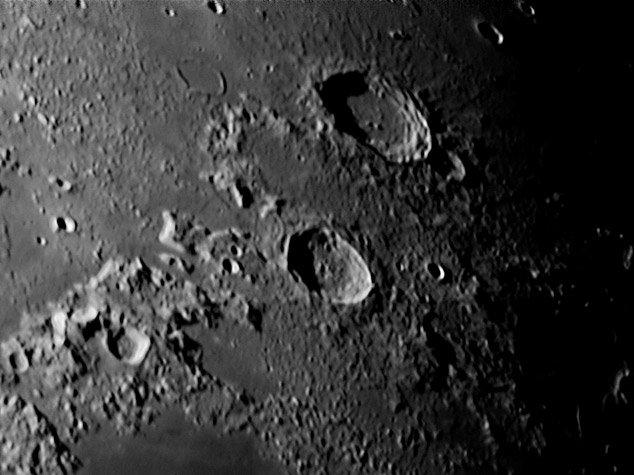| NOTES |
DATE:
|
Saturday,
September 2, 2007
|
TIME:
|
1:19
am EDT |
CAMERA:
|
Phillips
ToUcam Pro (640x480) with Baader Planetarium IR-Pass Filter |
LOCATION:
|
Kalamazoo
Nature Center - Owl Observatory |
INSTRUMENT:
|
Meade
12"
f/10 LX200 Schmidt-Cassegrain |
PROCESSING:
|
Images
acquired with IRIS. RegiStax 4 aligned and stacked 35 of
601 images. Wavelet filters adjusted with RegiStax.
Further enhancements made
with Adobe Photoshop 7.0. |
COMMENTS:
|
Eudoxus
is the crater shown in the center of the
image. It's named for the Greek astronomer and pupil of
Plato. He developed
a system of concentric spheres, rotating about the Earth (considered
the center
of the universe at the time), to explain the motions of celestial
bodies
Eudoxus is 67 km (42 miles) in diameter and contains fine-structured
terraced
walls. Aristoteles is the larger crater (87 km or 54 miles in
diameter)
above Eudoxus and is named for the famous Greek philosopher.
Below
Eudoxus is the greatly eroded crater Alexander, named after none other
than
Alexander the Great. It's slightly smaller in diameter than
Aristoteles
(82 km or 51 miles). |

